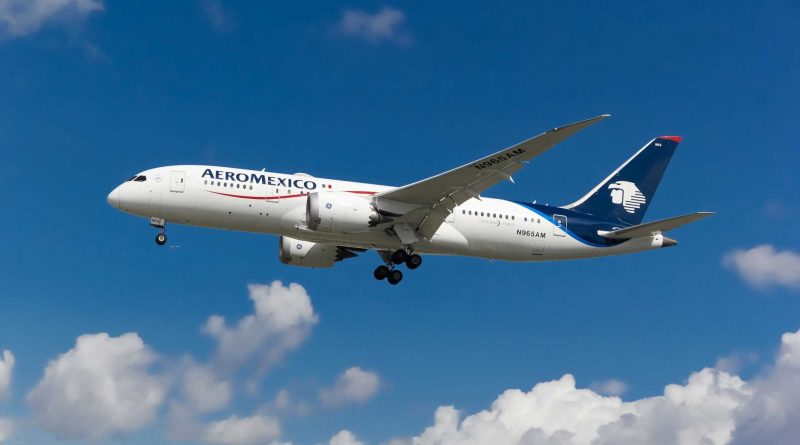FAA Downgrades Mexico’s Air Safety Rating—Here’s What That Actually Means
Just as summer vacations are picking up between the U.S. and short-haul international destinations such as Mexico, the Department of Transportation made an announcement that travelers might have found jarring on Tuesday: the Federal Aviation Administration (FAA) downgraded Mexico’s air safety rating.
Based on a reassessment of the Mexican government’s aviation oversight from October 2020 to February 2021, the FAA found that the nation’s air regulators did not meet certain international standards. These standards are set by the International Civil Aviation Organization, the aviation arm of the United Nations.
Based on the assessment, the FAA changed its safety rating of Mexico’s regulators from a Category 1—the highest ranking—to a Category 2. Here’s a breakdown of what this shift means and how it impacts travelers.
What exactly does a ‘downgrade’ mean?
A crucial distinction that bears repeating is that this change of safety rating applies to Mexico’s aviation regulatory body—the Agencia Federal de Aviacion Civil—and is not a safety assessment of individual airlines based in the country.
“This downgrade to Category 2 is specifically not an indictment of Mexico’s air carriers,” says Bob Mann, founder of aviation analytics and consulting firm R.W. Mann & Company. “FAA took this step to urge Mexico to improve its aviation oversight—personnel licensing, record keeping, and airport and airways facilities management.”
When these issues are improved, a Category 1 rating can be restored. Indeed, the FAA release states that the agency “is fully committed to helping the Mexican aviation authority improve its safety oversight system to a level that meets ICAO standards.” That includes offering resources to bring the oversight back in line with the international requirements.
“The U.S. identified 12 problems with Mexico’s air safety, and four had already been addressed before the downgrade occurred,” says Henry Harteveldt, an airline analyst and president of Atmosphere Research. “Mexico believes it will be able to address the remaining problems within three months. That’s an ambitious timeline, but the financial impact of this downgrade is substantial enough to force the Mexican government and airlines to act quickly.”
What is actually going to change this summer?
Not much that U.S. travelers will notice. In practice, the change in rating means that airlines based in Mexico cannot add new flights to the U.S. or increase the size of the aircraft used on current flights—which would add more seats on existing routes. That’s no doubt a major financial hit as travel reopens. On the flip side, U.S. carriers are still allowed to add new routes and additional seats into Mexico (and they have been in droves as more Americans feel comfortable traveling again.)
The lower rating also means that Mexico’s airlines can no longer codeshare flights with U.S. carriers for the time being. This will affect two U.S. airlines with such codeshare agreements, which is a partnership in which carriers operate flights for one another, often to expand their route networks in other countries or regions: Delta, which partners with Aeromexico, and Frontier, which partners with low-cost airline Volaris.
“Customers whose travel was booked directly with Delta will receive an email update about their itinerary. For customers whose travel was booked by a travel agency, additional details will be shared soon,” Delta said in a release.
“Our codeshare partner Frontier will remove its code from flights operated by Volaris, although customers will still have the option to purchase flights from Volaris and Frontier through the companies’ websites,” Volaris said in a similar release.
Those airlines will have to do some extra paperwork, but travelers scheduled on one of the codeshare flights for this summer should still be able to fly. “Passengers booked by U.S. carriers under codeshares on Mexican partner carriers will have to be reticketed,” says Mann. “That is probably the most onerous consumer aspect of the downgrade.”
How often does this happen?
The FAA is always reassessing aviation safety oversight in countries around the world. However lower ratings are infrequent. “These downgrades happen rarely, in great part because countries and airlines that want to serve the U.S. know it’s essential that safety is paramount,” says Harteveldt.
Oftentimes, a nation’s regulators are downgraded, the issues are resolved, and they are restored to a Category 1 rank. “The most recent example of a downgrade and recovery would be South Korea, where safety management systems were faulted,” says Mann. Other countries that have rebounded from a downgrade in the past include Indonesia, Ukraine, and Israel.
Other than Mexico, countries currently ranked as Category 2 with the FAA include Bangladesh, Pakistan, Malaysia, Curacao, Thailand, Ghana, the Organization of Eastern Caribbean States (which includes islands like St. Lucia, Dominica, and five others), and Venezuela.
Is it still safe to fly on Mexico’s airlines?
Yes. “The Mexican airlines that have been given permission to fly to the U.S. meet FAA’s safety standards,” says Harteveldt.
On the whole, the aviation industry still regards Mexico’s airlines as safe. “We believe Aeromexico is incredibly safe,” Glen Hauenstein, Delta’s president, said at a conference on Tuesday. “This is not about Aeromexico. This is about the Mexican version of FAA and having some of the right protocols in place. We have no issues with the safety of Aeromexico itself.”
Source: Read Full Article



